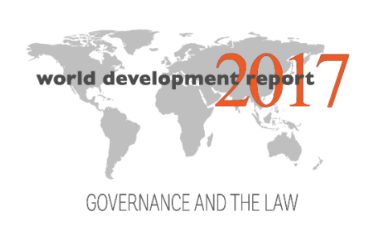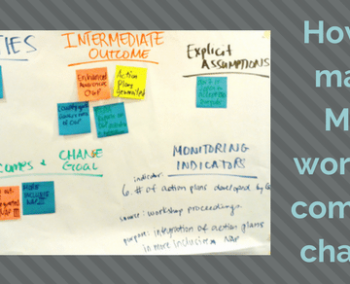The World Development Report – Our comments on latest overview


By Alan Hudson, Executive Director, Global Integrity, September 14, 2016.
1. We welcome the focus of the WDR for 2017 (overview here, full report here) on governance and the law, and the clear acknowledgement that politics is central to development. There is huge value in having the World Bank’s flagship report lead with this message.
2. However – as we argued in our July 26th blogpost – the WDR can and should do much more than restate that politics matters. The revised overview goes further in this direction, but we feel that the WDR could and should go further still in exploring the potential of politically-engaged adaptive learning, and adaptive programming, to address the political dynamics that are a key factor in creating the implementation gaps that para 0.2 of the WDR Overview notes.
3. Going further in this direction would also – as we began to outline in our July 13th blogpost – help to build a bridge towards the operationalization of the thinking in the WDR, and offer a response to the question recently posed by Stuti Khemani and Shanta Devarajan: “If politics is the problem, how can external actors be part of the solution?”
4. We welcome the emphasis on implementation gaps (para 0.2), best-fit rather than best practice (paras 0.11 and 0.31) and function more than form (para 0.12 and on). The World Bank and others have huge experience on trying to support governance reform using a best-practice model that often replicates forms while failing to deliver on functions. The shift of emphasis signalled by the WDR Overview is therefore very encouraging.
5. We appreciate the changes that have been made to the overview since the yellow version of the WDR, providing some additional conceptual clarity. For instance, we appreciate the useful additional clarity on commitment, coordination, cooperation.
6. In para 0.19, the first two sentences are confused/confusing. Policies appear twice. Are they the same policies or different? Is policy the dependent or independent variable? Or both?
7. Overall, the overview has many dimensions/concepts, with sub-categories for each: drivers of effectiveness (x3); power asymmetries (x3); levers (x3); entry points (x3, we think); drivers of change (x3). It’s easy to lose the thread of the narrative. Box 0.11 helps a bit, but many readers may have lost the plot by that stage. Improving the box, and making use of it at an earlier stage, might help.
8. We welcome the inclusion of material from Stuti Khemani and Shanta Devarajan’s recent work on political engagement (e.g. paras 0.65 and 0.66), but feel that it could be better integrated with the overall framework on fulfilling key governance functions, to address implementation gaps.
9. We very much welcome the inclusion of paras on adaptive programming (paras 0.74 and 0.75) and creating the conditions for adaptability (paras 0.84/85/86)
10. We welcome the section on “rethinking governance for development” (paras 0.76 and on) and the attempt to set out what the “new” principles mean in practice. But we feel that it needs additional work; at the moment it doesn’t give the reader a strong sense of what the Bank would actually do/support.
11. There seems to be some duplication between “navigating this report” and “rethinking governance for development”, with “creating conditions for adaptability” sandwiched in the middle but not properly integrated.
12. We appreciate the opportunity to provide additional input into the WDR process. We recognize that producing a WDR on governance, that satisfies a diverse audience, in a flagship publication for an institution that is wary about politics, is a huge challenge. We look forward to being part of the conversation, including around operationalizing the WDR through a stronger focus on politically-engaged adaptive learning, in the coming months.
 |
Alan Hudson
|
| Alan is our Executive Director. |
Leave a Reply Cancel reply
Related blog posts




